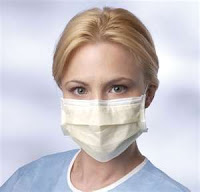n Isolation - Separate the hazard from people, by marking the hazardous area, fitting screens or putting up safety barriers. (e.g. Welding screens can be used to isolate welding operations from other workers. Barriers and/or boundary lines can be used to separate areas where forklifts operate near pedestrians in the workplace.)
n Safeguards - Safeguards can be added by modifying tools or equipment, or fitting guards to machinery. These must never be removed or disabled by workers using the equipment.
n Instructing workers in the safest way to do something - This means developing and enforcing safe work procedures. Students on work experience must be given information and instruction and must follow agreed procedures to ensure their safety.
Using personal protective equipment and clothing (PPE) - If risks remain after the options have been tried, it may be necessary to use equipment such as safety glasses, gloves, helmets and ear muffs. PPE can protect you from hazards associated with jobs such as handling chemicals or working in a noisy environment



